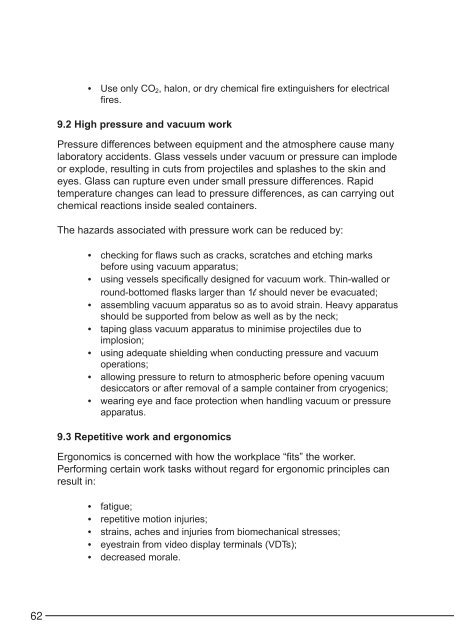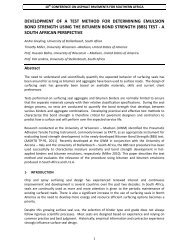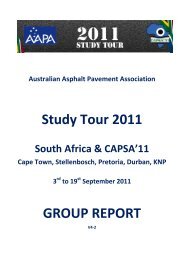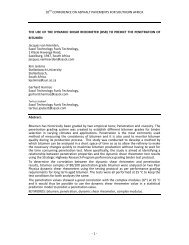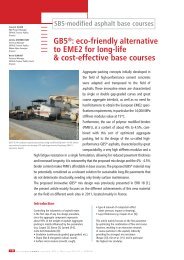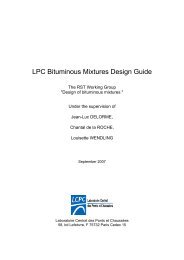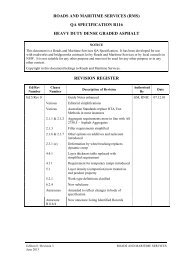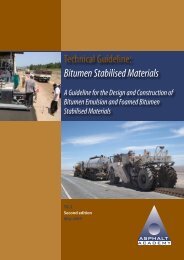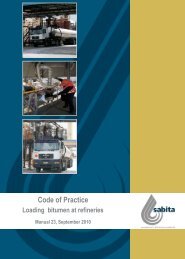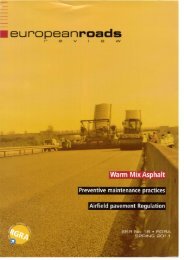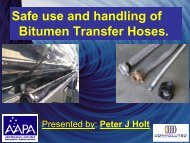Guide to the safe handling of solvents in a bituminous ... - Aapaq.org
Guide to the safe handling of solvents in a bituminous ... - Aapaq.org
Guide to the safe handling of solvents in a bituminous ... - Aapaq.org
- No tags were found...
You also want an ePaper? Increase the reach of your titles
YUMPU automatically turns print PDFs into web optimized ePapers that Google loves.
• Use only CO 2 , halon, or dry chemical fire ext<strong>in</strong>guishers for electricalfires.9.2 High pressure and vacuum workPressure differences between equipment and <strong>the</strong> atmosphere cause manylabora<strong>to</strong>ry accidents. Glass vessels under vacuum or pressure can implodeor explode, result<strong>in</strong>g <strong>in</strong> cuts from projectiles and splashes <strong>to</strong> <strong>the</strong> sk<strong>in</strong> andeyes. Glass can rupture even under small pressure differences. Rapidtemperature changes can lead <strong>to</strong> pressure differences, as can carry<strong>in</strong>g outchemical reactions <strong>in</strong>side sealed conta<strong>in</strong>ers.The hazards associated with pressure work can be reduced by:• check<strong>in</strong>g for flaws such as cracks, scratches and etch<strong>in</strong>g marksbefore us<strong>in</strong>g vacuum apparatus;• us<strong>in</strong>g vessels specifically designed for vacuum work. Th<strong>in</strong>-walled orround-bot<strong>to</strong>med flasks larger than 1l should never be evacuated;• assembl<strong>in</strong>g vacuum apparatus so as <strong>to</strong> avoid stra<strong>in</strong>. Heavy apparatusshould be supported from below as well as by <strong>the</strong> neck;• tap<strong>in</strong>g glass vacuum apparatus <strong>to</strong> m<strong>in</strong>imise projectiles due <strong>to</strong>implosion;• us<strong>in</strong>g adequate shield<strong>in</strong>g when conduct<strong>in</strong>g pressure and vacuumoperations;• allow<strong>in</strong>g pressure <strong>to</strong> return <strong>to</strong> atmospheric before open<strong>in</strong>g vacuumdesicca<strong>to</strong>rs or after removal <strong>of</strong> a sample conta<strong>in</strong>er from cryogenics;• wear<strong>in</strong>g eye and face protection when <strong>handl<strong>in</strong>g</strong> vacuum or pressureapparatus.9.3 Repetitive work and ergonomicsErgonomics is concerned with how <strong>the</strong> workplace “fits” <strong>the</strong> worker.Perform<strong>in</strong>g certa<strong>in</strong> work tasks without regard for ergonomic pr<strong>in</strong>ciples canresult <strong>in</strong>:• fatigue;• repetitive motion <strong>in</strong>juries;• stra<strong>in</strong>s, aches and <strong>in</strong>juries from biomechanical stresses;• eyestra<strong>in</strong> from video display term<strong>in</strong>als (VDTs);• decreased morale.62


